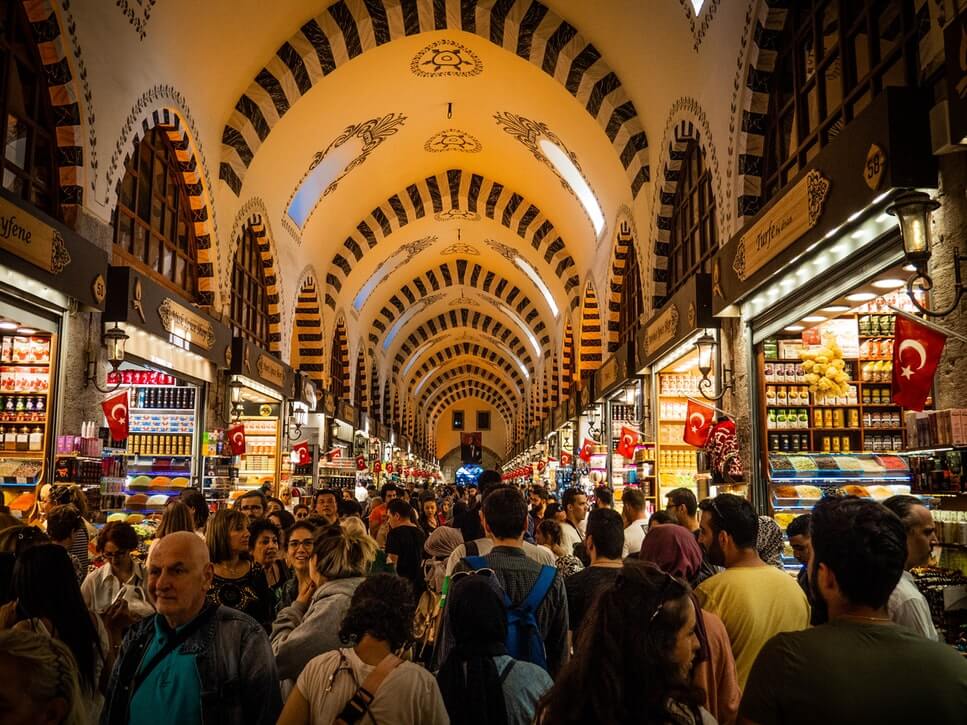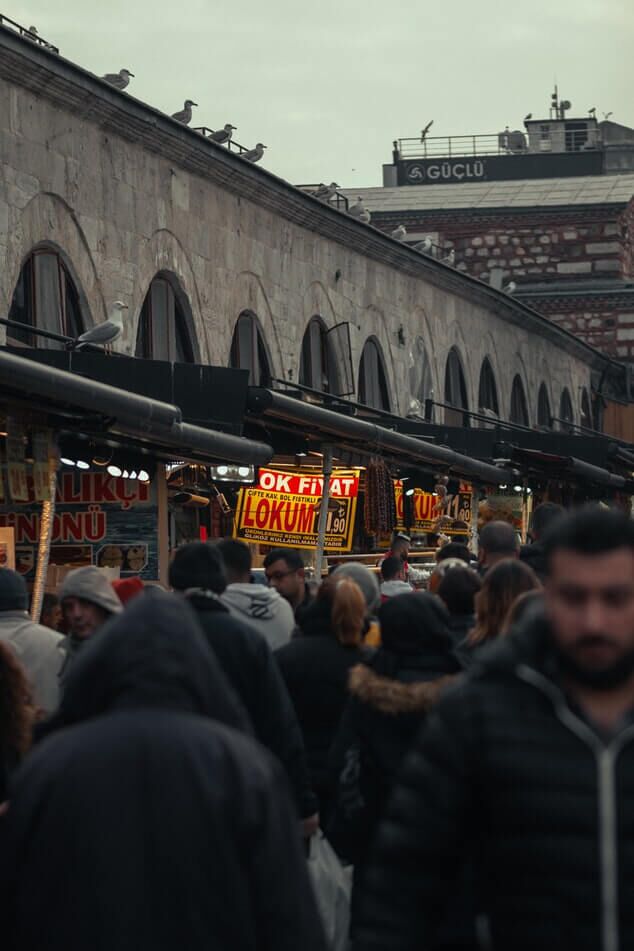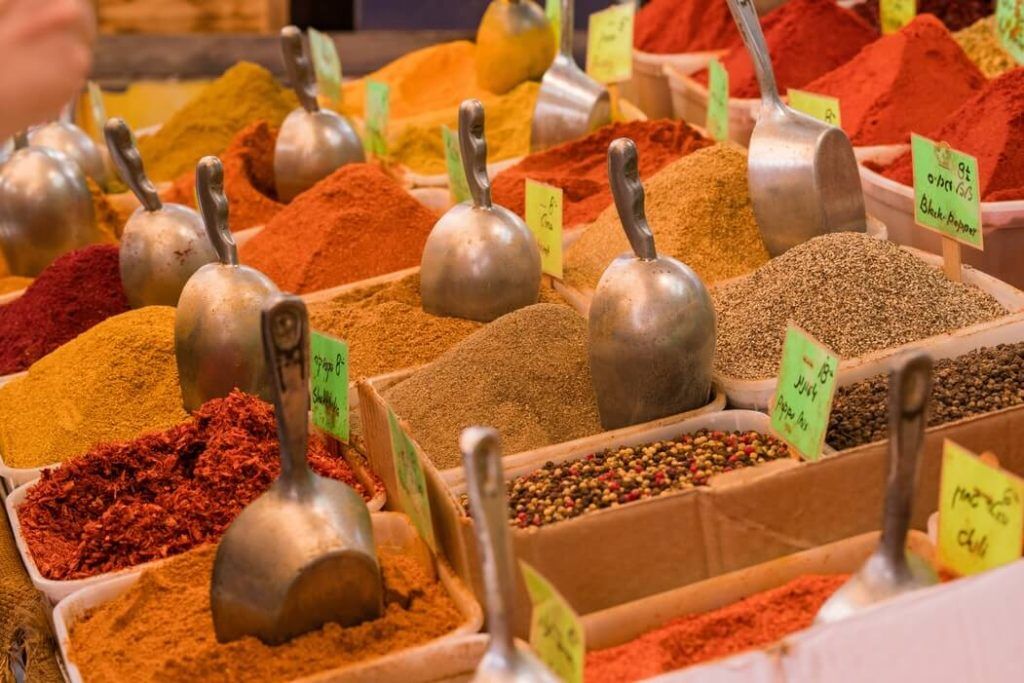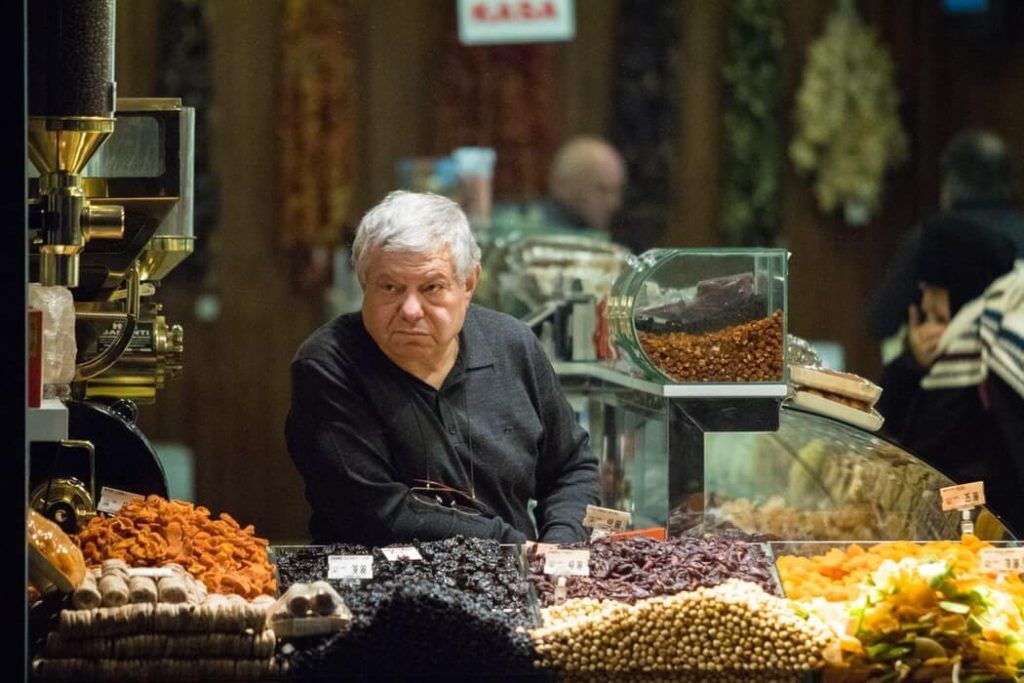Spice on the road: Istanbul’s Spice Bazaar
Spicy Adventures
Your cart is empty.
SUBTOTAL
£0.00

Spicy Adventures
Quite literally sitting on top of the point where east meets west, straddling both Europe and Asia, Istanbul is one of the great melting pots on earth.
For millennia, it has been an important strategic port, handling goods from shipping all over the world for a whole swathe of different empires. Meanwhile, traffic that had travelled from the far east along the infamous Silk Road all converged here. What Istanbul didn’t have simply wasn’t worth having.
Even to this day, you can get a real feel for what it was like in centuries gone by, simply by stepping into one of the many bazaars that are dotted around the city.
Most famous of all is the Grand Bazaar. Here, time has stood still. The characters may be played by different people, but they are the same as they were 500 years ago. The wares and products on offer are rich in culture and history. Every corner of this grand maze has a story to tell. Like a giant beehive, it is alive with the hustle and bustle of business.

On a recent trip, walking past one stall, a man approached me with perfect English asking if I was shopping for new jeans. I looked down, thinking to myself ‘what was he trying to say?!’
He continued ‘where are you from? As you are outside my shop right now, please, give me four minutes to show you. Beautiful materials. A pleasure for your eyes’. He grinned and placed a friendly hand on my shoulder. He’d played this trick a thousand times. He was good. ‘Not today, thank you’, I smiled.
There are varying levels of sales tactics going on here. Whilst some will take the hands-on approach and try to smooth talk, others are happy to nod from afar, perhaps a quick gesture – ‘yes, come in.’
When you first step into this labyrinth of wares, it can be incredibly overwhelming. It’s a beautiful, chaotic assault on all the senses. Carpets, coats, lamps large and small, gold jewellery, silver, silk, art, shoes and leather jackets – it is all here.
But I had somewhere else to be today. I wasn’t interested in fridge magnets or suits, no matter how hard the locals bayed for my attention.
You see, the Grand Bazaar is not the only attraction here in the heart of the old city. Working my way through the small, narrow streets, flowing with the torrent of tourists and locals alike, I made my way through the neighbourhood of Eminönü. This has been the heart of trade in the city since the day it was founded. It is here that you can also find the spice bazaar.

Commissioned in 1660, the Spice Bazaar was constructed in 1664 as part of the New Mosque, in order to pay for it. It came as part of a wider effort to rebuild Istanbul after the great fire of 1660 that had ripped through large parts of the city over the course of two days.
It had various other names such as the Egyptian Bazaar, due to the fact it was funded by the Ottoman eyalet of Egypt. Meanwhile, there is also the endearing nickname – ‘the pharmacy of Istanbul’. It’s an accurate description given just how many spices and herbs you could find here. These spices and herbs have, throughout the course of history, been used in a multitude of medical and health practices.
Indeed, not much has changed in several hundred years.
As I entered, I was taken with the flow of people, all moving in a continuous, clockwise stream. I felt as if I was making my way through an exhibition hall, observing the different stalls. The ceiling was tall and arched, towering above us, allowing for the chatter and commotion below to rise and echo around.
To my left, seemingly every spice in the world was laid out in neat, individual containers. All of them sitting next to one another, creating a bright, multicoloured patchwork. Powders, granules, seeds and leaves all piled high. They fall away at the entrance to each shop, behind where more treasures await.

It is foodie heaven. A spice paradise. And this was all just one stall.
Moving with the slow and steady stream of people, I approached the next one. Making eye contact with one of the vendors, I unwittingly committed to dialogue and trade negotiations.
‘Yes, yes! Please sir, have a look. What do you like?’ the plump shop owner enquired, his arms open, palms up, offering his wares like the messiah bringing peace and prosperity. His teeth shone out like a large, shiny grill in the middle of his thick, greying beard.
Oh go on then.
I paused and ran my eyes over each container, pondering.

With so much choice from every single one of the 88 stalls that line the edges of this ‘L’ shaped hall, it can be a little hard to decide exactly what you want to take home.
There are a few must-haves such as the Turkish Delights or the Turkish coffee. And don’t forget the delicious dried fruit – mango is a personal favourite.
However, it is of course the spices and herbs for which this place is renowned. Whilst you can rest assured that you will find large mountains and pretty domes of cumin, ginger, bay leaves, oregano, paprika and all your other usuals, there are a few delicacies local to Turkey and Istanbul that I can highly recommend:
Pul biber (also known as Aleppo pepper) is effectively just dried, red pepper flakes (sunflower oil and salt). It’s a mainstay of Turkish dishes and consequently you’ll find it alongside salt in most restaurants throughout Istanbul and Turkey. Think of it as the eastern equivalent of black pepper.
Varying in spiciness, it’s recommended that you try before you buy! The vendors will happily let you do this as part of negotiations. Look out for dark, glossy, slightly oily looking flakes as these are the freshest ones. If they look dry, then it’s old.
Pul biber (Aleppo pepper) is versatile enough to be used for anything from grilled prawns to pizza. However, you’ll see throughout the cafes and restaurants of Istanbul, look out for how they use it to season their lahmacun flatbread, their kebabs and manti dumplings!
Made from berries of wild Rhus Coriaria bush, this spice will appear maroon or burgundy in colour, like a fine red wine. Technically, Sumac isn’t actually a ‘true spice’. It is harvested from the fruit of the sumac, or sumach flower, a member of the cashew family.
It has a citric taste that’s universally appealing and therefore can be used across a wide variety of dishes. You’ll find that it’s prevalent in Middle Eastern cooking. For example, why not use it in your salad dressing as a replacement for lemon? Alternatively it can be sprinkled over yogurt as a dip. Absolutely delicious!
It’s one of those spices that just immediately enhances dishes, giving a fascinating and exotic twist. Fish, poultry and vegetable dishes will all spring to life in new ways.
Affectionately known as ‘pomegranate sauce’, this is another Turkish kitchen essential. It’s a thick, viscous syrup that’s made from pomegranate reduction. Rich and tangy, it can be utilised to sharpen up a salad, perhaps in place of Balsamic vinegar. Alternatively, use it to create a marinade or glaze for salmon and poultry.
Of course, pomegranate is also very rich in nutrients, packed with antioxidants, vitamins and minerals. It’s a win-win, right at home in ‘the pharmacy of Istanbul’.
Otherwise known as ‘Nigella Seeds’, Çörek otu is used extensively throughout Turkish cooking, particularly in baking. Tasting like a combination of onion, oregano and black pepper, these little black seeds are often sprinkled on to cakes, breads and savoury pastries.
The seeds themselves come from the flower ‘Nigella Sativa’ which flowers natively once a year throughout the Indian subcontinent and West Asia. This is undoubtedly a product that would’ve made its way to Istanbul along the Silk Road.
Keep your eye out for the in-house spice mixes that are made only here in the spice bazaar. In the past, I have found some beautiful mixes for meat (kofte mixes), as well as fish. Different shops and stalls will have their own special recipes and mixes so it’s really worth shopping around and again, try before you buy!
As with any other market, prepare to negotiate and haggle. To be fair to the vendors within the Spice Bazaar, a lot of them have labelled all their prices clearly and they’re pretty reasonable. However, don’t shy away from negotiating. I’d argue it’s part of the fun and experience of shopping in Istanbul! They will always start high and therefore, you should start low. Be firm, stand your ground, know when to say no. You should hopefully meet somewhere in the middle – a price that you’re both happy with.
Understanding Spices
Spices have long been integral to the UK's culinary landscape, adding depth, flavours, and richness to a myriad of dishes. From the pungent aroma of cumin in Indian curries to...
Read MoreUnderstanding Spices
Confetti is an essential part of any wedding day. Not only is it a wonderful way to greet a newlywed couple, but it also provides some beautiful photo opportunities. The...
Read MoreSeasonal Ideas
It’s no secret that any handmade gift will always be more special than a store-bought one. Homemade food gifts are especially wonderful, a labour of love that shows someone you...
Read MoreHealth and Wellbeing
It’s no secret that winter’s cold and gloomy weather makes us crave indulgent dishes like fondue and baked goods like sticky toffee pudding and apple crumble. While Christmas is the...
Read More